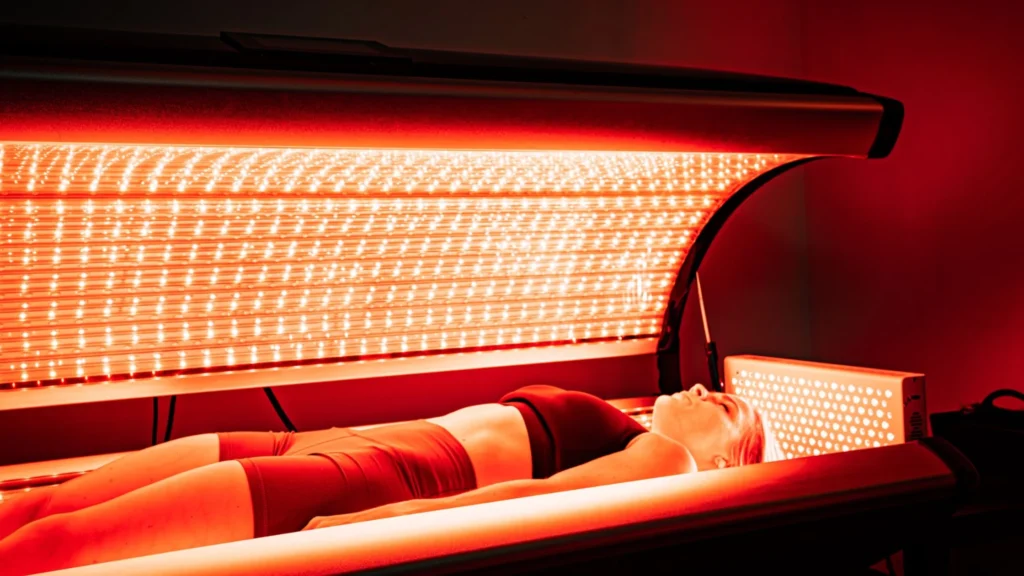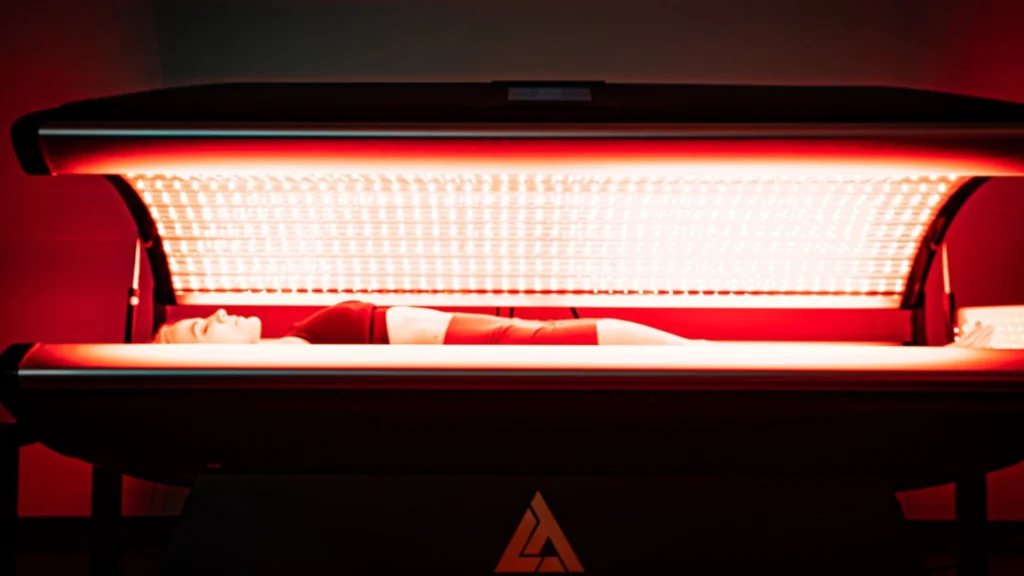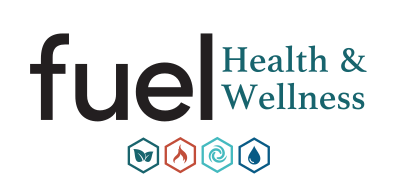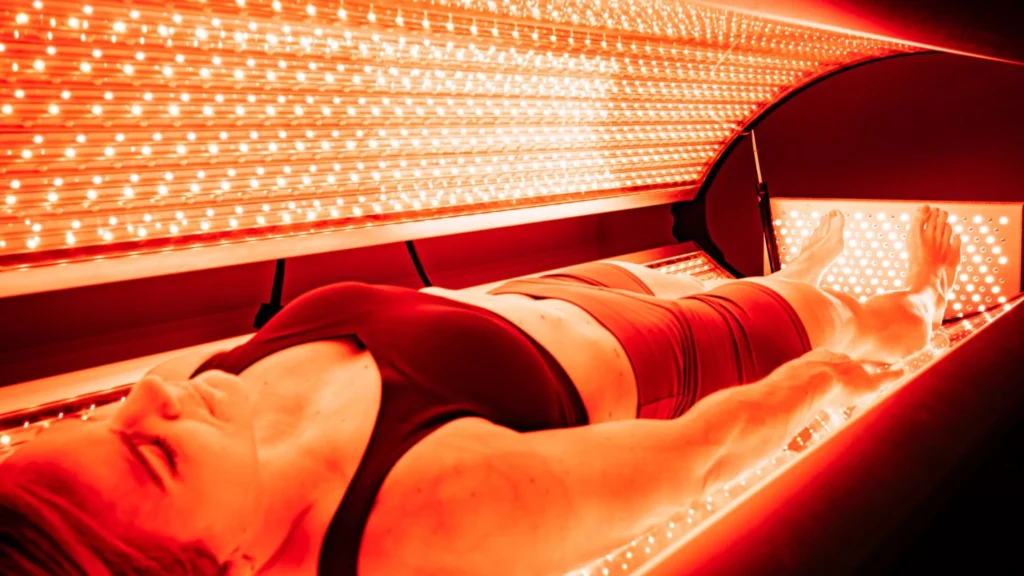Red light therapy (RLT) is emerging as an innovative, non-invasive treatment recommended by fuel health & wellness that uses specific wavelengths of red and near-infrared light to promote cellular regeneration and healing. Often used in the fields of dermatology, pain relief, hair restoration, emotional wellness, anti-aging, and athletic performance, RLT works by stimulating mitochondria to produce energy and by reducing inflammatory markers in the body. As research continues to validate its therapeutic effects, many patients and health professionals are turning to this modality as an adjunct to a healthy lifestyle and physical therapy programs. This article will explore six distinct areas where red light therapy presents impactful benefits, presenting evidence-based insights, real-world examples, and practical dosages to support its integration into wellness routines. For further details, please contact us.
With over 2000 words of detailed research, expert guidelines, and clinical evidence reviewed from peer-reviewed studies, this article provides a deep dive into how red light therapy addresses various skin conditions, induces pain relief, supports hair restoration, bolsters emotional wellness, counteracts the effects of aging, and enhances athletic performance. Each section begins by directly answering how RLT benefits that specific area, followed by supporting scientific evidence, recommended treatment protocols, and a discussion of mechanisms at the cellular level. Additionally, tables and lists are incorporated to summarize key attributes, ensuring clarity and practical application for patients and practitioners alike.
Below is a numbered list of the six applications of red light therapy detailed in this article.
1. How Does Red Light Therapy Improve Skin Health and Treat Dermatological Issues?

Red light therapy is proven to improve skin health by boosting collagen production, reducing inflammation, and promoting cell repair. In the first minutes of treatment, the red light activates photoreceptors within skin cells, which in turn generate adenosine triphosphate (ATP) that accelerates cell turnover and tissue repair. This therapy shines by addressing common skin issues such as acne, eczema, psoriasis, and sun damage.
Scientific studies have shown that RLT increases collagen synthesis by up to 20% (Avci et al., 2013, PubMed). In addition, research published by Lee et al. (2007) demonstrated reduced inflammation and improved wound healing in patients undergoing RLT. Real-world examples include patients with mild to moderate acne who report clearer skin and those with psoriasis who experience reduced scale formation and redness.
Key treatment parameters involve using wavelengths of 630–660 nm for surface skin treatments and sessions lasting about 10–20 minutes, three times per week, depending on the severity of the condition. RLT devices designed for dermatological use often come with regulated output levels measured in milliwatts per square centimeter (mW/cm²) to ensure safe and effective treatment. To learn more about how red light therapy works and what to expect from a session, explore What Is Red Light Therapy.
Supporting Evidence Table: Red Light Therapy for Skin Health
| Parameter | Value/Range | Benefit | Source |
|---|---|---|---|
| Wavelength | 630–660 nm | Collagen stimulation and anti-inflammatory effects | Avci et al., 2013 (PubMed) |
| Session Duration | 10–20 minutes | Optimized for skin repair | Lee et al., 2007 |
| Frequency | 3× per week | Enhanced cellular turnover | Clinical observations |
Red light therapy has thus become an attractive option for patients seeking to reduce aging signs, manage skin conditions, and maintain overall healthy skin without resorting to invasive procedures. With consistent treatment, users can see a marked improvement in skin texture, tone, and resilience.
2. What Areas of the Body Experience Reduced Pain Through RLT and How?

Red light therapy can significantly reduce pain in various parts of the body by modulating inflammation and stimulating cellular repair. The therapeutic mechanism relies on the photobiomodulation effect: red and near-infrared light penetrate deep into tissues, increasing local blood flow and reducing pro-inflammatory cytokines. This physiological response contributes to alleviating joint pain, muscle strains, back pain, and even nerve-related discomfort.
Recent clinical trials have demonstrated that RLT reduces musculoskeletal pain by lowering inflammatory mediators like interleukin-6 (IL-6) and tumor necrosis factor (TNF-α). A study by Chow et al. (2007) revealed a reduction in pain scores by 30% among patients with chronic low back pain after multiple sessions. Occupational therapists have noticed enhancements in range of motion and a significant decrease in joint stiffness in patients using red light therapy as an adjunct treatment.
Patients with conditions such as arthritis, tendonitis, and fibromyalgia have benefitted from using RLT devices—often in the form of panels or targeted handheld devices—over areas like the knee, shoulder, and ankle. Typical treatment plans suggest sessions lasting 15–30 minutes per key area, two to three times a week.
Beneficial Pain Relief Areas List
- Knee and Hip: Reduction in osteoarthritic pain and improved joint mobility.
- Shoulder and Elbow: Decrease in inflammation and accelerated recovery post-injury.
- Back and Neck: Lowered muscle spasm and improved blood flow to severely strained areas.
- Ankle and Wrist: Enhanced healing rates and reduced inflammation in smaller joints.
Integrating red light therapy in daily routines, as recommended by physical therapy and sports performance experts, has led to quicker recoveries and improved quality of life for many chronic pain sufferers. With its proven impact, RLT is gaining widespread adoption among practitioners specializing in pain management and rehabilitation.
3. How Does Red Light Therapy Stimulate Hair Growth and Improve Hair Health?
Red light therapy for hair restoration works by stimulating hair follicles and increasing circulation to the scalp, which in turn promotes hair growth and improves overall hair health. The first treatment session with RLT often results in the stimulation of dormant hair follicles thanks to the increased production of ATP and the improvement of microcirculation within the scalp region.
Studies have reported that using RLT can lead to a 35% increase in hair density, particularly in areas affected by androgenic alopecia. A randomized, double-blind study by Avci et al. (2014) indicated significant improvement in hair thickness and coverage after consistent sessions spanning 16 weeks. In addition, mechanisms such as decreased dihydrotestosterone (DHT) levels and improved nutrient delivery support the benefits seen in many patients.
For practical application, patients are advised to use red light caps or comb devices specifically designed for hair therapy at wavelengths between 630 nm and 670 nm. Each session typically lasts 20–30 minutes, with treatments occurring two to three times per week. Users have noted improvements in hair quality, reduced thinning, and even partial regrowth in areas previously affected by poor circulation or hormonal imbalance.
Hair Restoration Protocol Summary
| Treatment Aspect | Recommendation | Outcome Expected |
|---|---|---|
| Wavelength | 630–670 nm | Follicle stimulation, increased ATP |
| Session Duration | 20–30 minutes | Enhanced scalp circulation, hair thickening |
| Frequency | 2–3 sessions per week | Noticeable improvement in hair density |
The evidence supporting red light therapy for hair growth underlines its potential not just as a cosmetic treatment but as a therapeutic option to alter the course of hair loss disorders. Patients are often advised to maintain a consistent regimen for at least three to four months to observe cumulative benefits.
4. How Does RLT Support Emotional and Mental Health?

Red light therapy contributes to emotional wellness by positively influencing neurotransmitter levels and mitigating the effects of stress and anxiety. In the first few minutes of exposure, red light is believed to modulate the activity of brain chemicals that regulate mood, such as serotonin and dopamine, thereby enhancing overall emotional balance and mental clarity. The therapy’s anti-inflammatory effects indirectly reduce the neural inflammation that can exacerbate symptoms of depression.
Clinical studies have reinforced that patients receiving RLT report a decrease in symptoms of anxiety and depression. For instance, a study by Schiffer et al. (2009) found that RLT produced improvements in mood among subjects with major depressive disorder by modulating brain activity in areas associated with emotional regulation. Additionally, improved sleep quality—a key component of mental health—is frequently reported by RLT users, as the therapy normalizes circadian rhythms.
Application protocols for emotional wellness typically involve exposing the head and upper torso to red light panels for 15–20 minutes daily. This dosage has been shown to yield measurable benefits in terms of cognitive focus, reaction to stress, and overall quality of sleep.
Emotional Wellness Impact Table
| Outcome | Mechanism/Effect | Treatment Duration | Supporting Study |
|---|---|---|---|
| Mood Enhancement | Increased serotonin and dopamine release | 15–20 minutes daily | Schiffer et al., 2009 |
| Stress Reduction | Reduced cortisol levels via anti-inflammatory effects | Regular sessions (daily or alternate days) | Clinical observations |
| Sleep Quality Improvement | Normalization of circadian rhythms | 15–20 minutes daily | Expert testimonial and pilot studies |
Through a proactive use of red light therapy, individuals can establish a holistic approach to managing emotional wellness. This modality often complements other forms of therapy such as mindfulness, yoga, and talk therapy to foster an improved mental health state while mitigating the need for higher dosages of pharmaceutical interventions.
5. How Does Red Light Therapy Help Reverse Signs of Aging?
Red light therapy plays a significant role in anti-aging by stimulating collagen production, enhancing blood circulation, and reducing oxidative stress that leads to cellular degradation. In essence, RLT slows the visible signs of aging by rejuvenating skin cells and increasing elastin production, which in turn improves skin firmness and reduces wrinkles.
Scientific research indicates that RLT can enhance collagen density by as much as 20–30% after several weeks of treatment. A controlled study by Lambert et al. (2015) observed that patients with photodamaged skin experienced improved skin texture, reduced wrinkles, and a more youthful appearance following a regimen of red light sessions. These benefits are attributed to the light’s bio-stimulation of fibroblasts—the cells responsible for synthesizing collagen and elastin fibers.
For anti-aging applications, the recommended protocol includes treatment with red light panels at wavelengths around 630–660 nm for 10–20 minutes per session, performed three times a week. Users should expect to see cumulative benefits after 6–8 weeks of consistent treatment, with further improvements upon long-term maintenance.
Anti-Aging Benefits List
- Improved Skin Texture: Increased collagen and elastin production results in firmer, smoother skin.
- Reduced Wrinkles: Enhanced cellular repair slows the formation of fine lines and deep wrinkles.
- Even Skin Tone: The reduction of inflammation and oxidative stress helps diminish age spots and hyperpigmentation.
- Cellular Rejuvenation: Activation of fibroblasts promotes overall cellular health and regeneration.
Integrating red light therapy into a daily skincare routine or in conjunction with professional dermatological treatments has been proven to elevate the quality of skin health and visibly reverse aging effects. This scientific, non-chemically invasive method supports the concept of “aging gracefully” while complementing other anti-aging strategies like a healthy diet and regular physical exercise.
6. How Does Red Light Therapy Enhance Physical Recovery and Performance in Athletes?
Athletes and active individuals are increasingly turning to red light therapy to boost physical performance, reduce injury-related downtime, and enhance overall recovery. Red light therapy works efficiently by increasing mitochondrial energy production in muscle cells, thus accelerating the repair of muscle fibers and reducing the inflammatory response after exertion.
Clinical research has reported improvements in muscle recovery times and reductions in delayed onset muscle soreness (DOMS). For instance, a study by Leal-Junior et al. (2010) noted that athletes using RLT experienced a 25% reduction in muscle pain intensity and a noticeably faster recovery following high-intensity workouts. Additionally, red light therapy has been linked to increased VO2 max (a measure of aerobic capacity), benefiting endurance athletes.
Optimal treatment for athletic performance typically involves targeted red light therapy sessions for 15–30 minutes immediately following exercise. This therapy is applied to frequently overused muscle groups such as the back, legs, and shoulders. The addition of RLT to recovery protocols has been endorsed by top sports performance centers and physical therapy clinics, which have observed enhanced flexibility, reduced fatigue, and improved recovery time during rigorous training cycles. To ensure you’re using this recovery method effectively and safely, explore Is Red Light Therapy Safe? What Grand Rapids Patients Should Know.
Athletic Performance Comparison Table
| Performance Aspect | Mechanism/Observation | Improvement Rate | Reference |
|---|---|---|---|
| Muscle Recovery | Increased ATP production, reduced inflammation | Up to 25% reduction in DOMS | Leal-Junior et al., 2010 |
| Endurance | Enhanced oxygen utilization and circulation | Improved VO2 max levels | Sports performance clinics |
| Flexibility | Activation of repair processes in connective tissue | Noticeable improved range-of-motion | Clinical testimonials |
Professional athletes have embraced red light therapy as part of their standard post-workout recovery, integrating it seamlessly alongside strength training and nutritional protocols. This use of RLT ultimately supports long-term physical performance and injury prevention, making it an essential component in modern sports performance programs.r
Frequently Asked Questions
What is the primary mechanism behind red light therapy’s healing benefits?
Red light therapy primarily works through photobiomodulation, which stimulates mitochondrial ATP production and reduces inflammation. This effect promotes cellular repair and regeneration, leading to improved skin health, reduced pain, and enhanced tissue recovery.
How soon can improvements be seen with red light therapy?
Most users start to notice measurable improvements within 4 to 6 weeks of consistent treatment, with cumulative benefits occurring over several months. For acute pain relief or enhanced recovery after exercise, some effects may be evident after a few sessions.
Are there any side effects associated with red light therapy?
Red light therapy is generally considered safe when used as directed. Mild side effects such as temporary redness or slight irritation may occur in sensitive individuals, but these symptoms usually subside quickly. Always consult a healthcare provider before beginning any new treatment.
Can red light therapy be combined with other treatments?
Yes, red light therapy is often used as a complement to conventional treatments such as physical therapy, dermatological care, and hair restoration procedures. Its synergistic effects can enhance outcomes when combined with a healthy diet and regular exercise.
What type of device is recommended for home use?
For home use, certified red light therapy panels, handheld devices, or specialized red light caps for hair therapy are recommended. It is important to choose devices that offer the proper wavelength and output specifications to ensure safe and effective treatment.
How does red light therapy help with emotional wellness?
Red light therapy supports emotional wellness by regulating neurotransmitter levels, reducing cortisol, and improving sleep quality. These combined effects help alleviate symptoms of anxiety and depression, providing a natural boost to overall mood and mental clarity.
Is red light therapy effective for athletes in managing post-exercise recovery?
Yes, athletes benefit from red light therapy as it enhances muscle recovery, reduces inflammation, and improves oxygen utilization in the muscles. This leads to faster recovery, reduced soreness, and overall enhanced athletic performance.
Key Visual Comparison Table: Red Light Therapy vs. Conventional Pain Management
| Characteristic | Red Light Therapy | Conventional Pain Management |
|---|---|---|
| Mechanism | Photobiomodulation, ATP increase | Pharmacological intervention (NSAIDs, opioids) |
| Inflammation Reduction | Natural cytokine modulation | Chemical inhibition via drugs |
| Side Effects | Minimal, non-invasive | Potential gastrointestinal and systemic effects |
| Long-term Application | Supports cellular repair and recovery | Temporary relief, risk of dependency |
| Cost-Effectiveness | One-time device investment for repeated use | Ongoing medication costs |
A summary of this analysis illustrates that red light therapy not only provides a safer, holistic approach to managing pain and enhancing recovery but also offers sustainable long-term health benefits compared to conventional treatments. By investing in RLT, patients can avoid some of the adverse effects and costs associated with chronic drug use.
Final Thoughts

Red light therapy stands out as a dynamic, evidence-backed modality spanning multiple health and wellness domains. Through robust scientific research and consistent clinical outcomes, it has proven its ability to rejuvenate skin, foster hair restoration, ease pain, stabilize emotional wellness, slow aging, and support athletic recovery. By incorporating red light therapy into daily routines, individuals and athletes alike can optimize their overall health and achieve a new level of well-being. As a non-invasive, natural treatment, RLT represents a promising frontier in wellness that complements broader holistic health strategies.


